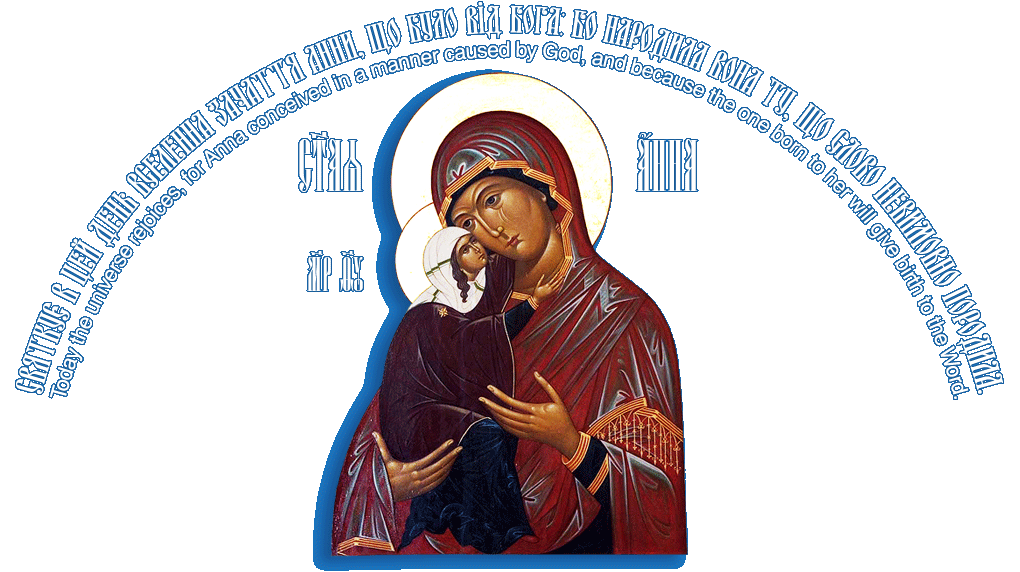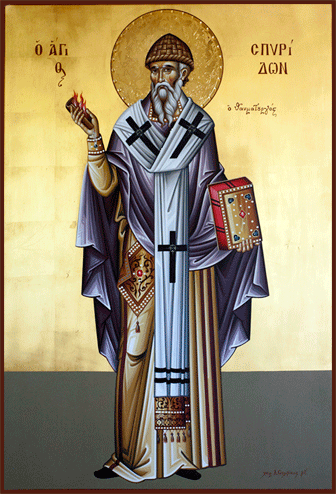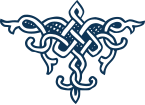Orthodoxy • Православіє
1 John 2:4-8
He that says, I know Him, and keeps not His commandments, is a liar, and the truth is not in him.
But whoever keeps His word, in him verily is the love of God perfected: by this we know that we are in Him.
He that says he abides in Him ought himself also so to walk, even as He walked.
Brethren, I write no new commandment unto you, but an old commandment which you had from the beginning. The old commandment is the word which you have heard from the beginning.
Again, a new commandment I write unto you, which thing is true in Him and in you: because the darkness is past, and the true light now shines.
1 Івана 2:4-8
Хто говорить: Пізнав я Його, але не додержує Його заповідів, той неправдомовець, і немає в нім правди!
А хто додержує Його слово, у тому Божа любов справді вдосконалилась. Із того ми пізнаємо, що в Нім пробуваємо.
А хто каже, що в Нім пробуває, той повинен поводитись так, як поводився Він.
Улюблені, не пишу я для вас нову заповідь, але заповідь давню, яку мали від початку: заповідь давня, то слово, що чули його від початку.
Але нову заповідь я вам пишу, що справді вона в Нім та в вас, що минається темрява, і світло правдиве вже світить.
“Orthodoxy 101” — Some basic facts about the Orthodox Church
Although Eastern Orthodoxy has been called North America’s “best-kept secret”, It is a Faith that has given guidance, strength and edification to millions of believers over the course of 20 centuries. Here are some basic facts about the Orthodox Church.
Church Origins
The Orthodox Church is an apostolic, ecumenical (universal) Church, originating from Christ and His apostles at the very start of the Christian era at Pentecost, as recorded in the Book of Acts. Its founder and head is Jesus Christ.
Church Government
The Orthodox Church can be thought of as a commonwealth of self-governing, “local” Churches. These Churches generally have one of two statuses: autocephallous, completely self-governing in all matters, both internal and external; and autonomous, self-governing in most internal matters, but subordinate to an autocephallous “mother Church” in matters such as external relations and the election of bishops, specifically the ruling bishop (“primate”). Although recent centuries have seen the emergence of national Churches outside of that nation’s borders, historically Churches are centred in a specific geographic region. Any movement outside of that geographical area would have been for the sake of planting the Church in a new geographical area.
The primate of a local Church is usually called a Metropolitan or a Patriarch. Every local Church is divided into component regions called diocese, with each diocese being headed by a local bishop.
Spiritual administration of several dioceses (or of one very large diocese called an “archdiocese”) is the responsibility of an archbishop. These distinctions in title, “patriarch”, “metropolitan”, “archbishop”, “bishop” indicate only the sphere of that bishop’s administration; when gathering in council, every bishop, regardless of title, has an equal voice in the conciliar process.
The council (in Greek “synod”, in Ukrainian, «Собор») is the cornerstone of Orthodox Church government. The highest authority on all matters of faith and Church life is a Ecumenical (“universal”) Council, whose decisions are universally binding for all Orthodox Christians. Each self-governing Church also holds it own local councils to decide matters of local interest. Each diocese in a local Church is administered through diocesan councils, and every parish or monastery in a diocese is administered through a parish/ monastic council.
Ministry
In the Orthodox Church there are three major orders of ministry: deacons, priests and bishops. Orthodox deacons and priests may marry, but only prior to their ordination; bishops are ordained monks. The bishop is the head of the Church council or diocesan council over which he presides. The priest serves as the representative (“vicar”) of the bishop in a parish, and holds primary responsibility for all matters of parish life. Deacons were historically involved in the pastoral ministries of the parish. More recently, the role of the deacon has been largely focussed on worship, although there is now a reemergence of the ministry of the diaconate in the wider life of the parish (pastoral care, teaching, ministry).
Laity also are involved in the life of the Church through liturgical, administrative, teaching and humanitarian ministries. The Orthodox Church stresses the interdependence of her ordained and lay members; neither can function fully without the presence, support and participation of the other.
Worship
The “crown jewel” of Eastern Orthodoxy is her worship. Liturgical expressions in the Orthodox Church are intentionally designed to reflect biblical accounts of the worship of God taking place around His heavenly throne (see Isaiah 6 and Revelation 4).
The three main services in the Church’s liturgical cycle are:
1.) Vespers (evening worship), which has the theme of hope in Christ as the Light who shines in the darkness;
2.) Matins, with the theme of Christ as God who has appeared to us heralding the Good News of salvation, and
3.) the Divine Liturgy, a celebration of Christ’s Kingdom which is both yet to come and at the same time already reigning in the heart of every believer.
Orthodox worship is very physical, with many symbolic articles and gestures. Perhaps the best-known of such articles are icons. Icons are understood as scripture in pictorial form; they present the message of the Bible using images rather than words. As Orthodox Christians pray before an icon or honour it with a kiss, they are not worshipping the icon itself, but showing love and reverence (“veneration”) for the person or event portrayed in the icon.
It is popular to speak of seven “Holy Mysteries” (sacraments) recognised by the Church. Four of these Mysteries are part of the life of every believer:
• Baptism,
• Chrismation (Confirmation),
• the Holy Eucharist, and
• Repentance (Confession).
The remaining three focus on specific callings or situations:
• Marriage,
• Ordination, and
• Unction (the anointing of the sick).
A bishop alone celebrates the rite of ordination, while the remaining six may be celebrated by a bishop or priest. In an emergency, life-threatening situation, a lay person may baptise someone.
Beyond these seven Holy Mysteries, Orthodox theologians will also speak of other mysteries, or “sacramentals”, such as monastic tonsure, the funeral rites, and the various rites of blessing and sanctification (such as the blessing of Holy Water, the blessing of homes, etc.)
Additionally, there are other rites which are part of the Church’s liturgical expressions. Among these are a special kind of sacred poetry called “Akathists”, orders of morning and evening prayer, and other daily services.
All of the services are celebrated within the context of the Liturgical year, which begins in September and concludes in August. This is the annual cycle of feasts and fasts that sets the rhythm for the life of Orthodox believers. The majority of Orthodox believers in the world celebrate the holy days of the Church Year according to the Julian Calendar.
Spirituality
Human beings are created in the image and likeness of God — the image of God being all our God-like qualities in potential, the likeness of God being these qualities in their fulfillment. Eastern Orthodoxy teaches that the goal of human life is growth in the likeness of God, a process called “theosis” or “deification”. By Divine grace, every person has the potential to become God-like; this was our original calling.
As a result of sin and death, this process is impaired, and we fall under the tyranny of various “passions” (obsessions, compulsions, addictions) that are part of our fallen human nature. Rather than turning to God for fulfillment in life, we seek out an earthly source for inner peace. Such a search is futile as only He who created us can give us the sense of meaning, peace and fullness of life that we seek. The result is a growing sense of desperation, anxiety and depression.
The Church is viewed as a spiritual hospital where the passions are cured, true peace and fulfillment can be found, and where one can once again undertake the journey of theosis. All that the Church offers us, worship, feasts, fasts, etc., are viewed as a therapeutic regime given by Christ for our healing and salvation.
Suggested Reading
Introducing the Orthodox Church
— Fr. Anthony Coniaris
An excellent overview of Orthodox belief and practice. Written in an easy to read style that is perfect for those just starting to study the Faith.
The Orthodox Church
— Metropolitan Kallistos (Timothy) Ware
Known throughout the world as the best contemporary survey of Orthodox Christian history, faith and life. A “must-have” for anyone seeking to learn more about Eastern Orthodoxy.
See also:
• What is the Divine Liturgy?
• Great Vespers: Evening Worship of the Orthodox Church
• The Symbolism of the Eastern Orthodox Marriage Service
• In Praise of the “New Eve”: The Mother of God and the Dignity of Women
• Angels: The Eastern Orthodox Teaching on the “Body-less Powers”


